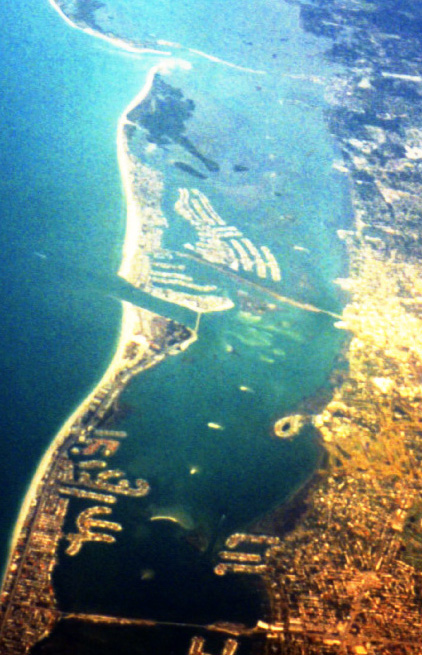
Urban expansion and loss of Open-space
Half the story in America's loss of open space is population growth; the other half is due to increasing consumption. Neither cause of depletion could occur without cheap fuel. Electricity pumps water. Water and power as utilities drive half the sprawl equation. The water comes largely from reservoirs in the ground called aquifers or from lakes and streams. Land, known as watershed and recharge areas, is required to assure sufficient amounts of clean and healthy water. Instead coastal cities are de-salting seawater to drink.
 As space is consumed three things happen.
As space is consumed three things happen.
First water is contaminated by urban runoff.
Second the area for cleansing the reserve supplies of water is diminished.
Third the price of existing development is devalued.
 Development in the US over twenty years meant
that the acre for acre pace of urban growth exceeded population
growth by nearly three to one. Even cities like Detroit that lost
population increased the developed area in the metropolitan region.
As paved area sprawls heat derived from reflection increases.
Development in the US over twenty years meant
that the acre for acre pace of urban growth exceeded population
growth by nearly three to one. Even cities like Detroit that lost
population increased the developed area in the metropolitan region.
As paved area sprawls heat derived from reflection increases.
The national extent of sprawl and its impinging on water and air resources is staggering since farms, forests, and orchards are lost.
The Tampa Bay region already suffers from traffic congestion, salt-water intrusion into water supplies and over-pumping of ground water. The dirtiest air in the state is in the Tampa bay area. So too are the filthiest power plants in the southeastern region. Growth's tax on farms, parks and municipal services can be expressed in dollars and in opportunity lost. Tampa is the most dangerous place for pedestrians in America. Tampa also exceeded ozone standards, as a smog ingredient, more than any other Florida county in 1998.
The historical open space movement.
Long Island, New York.
![]()
|
|
|
|
|